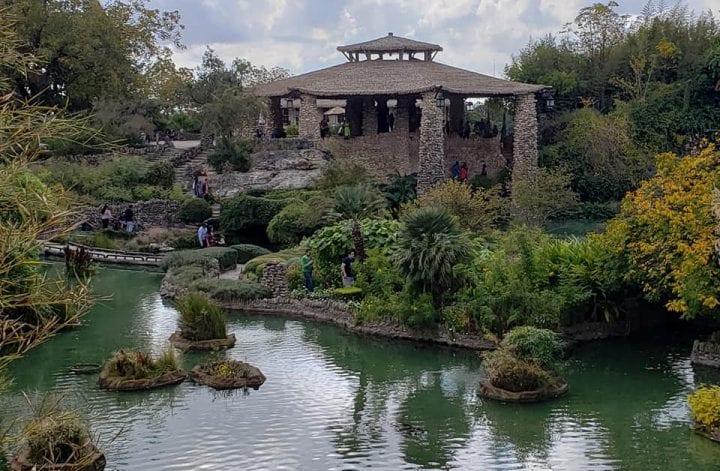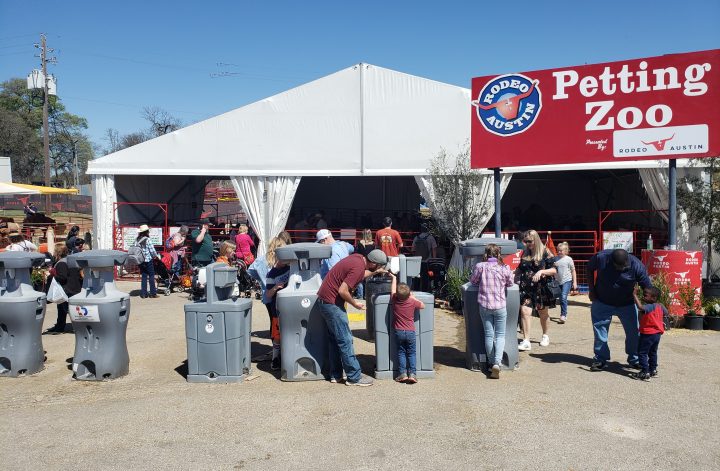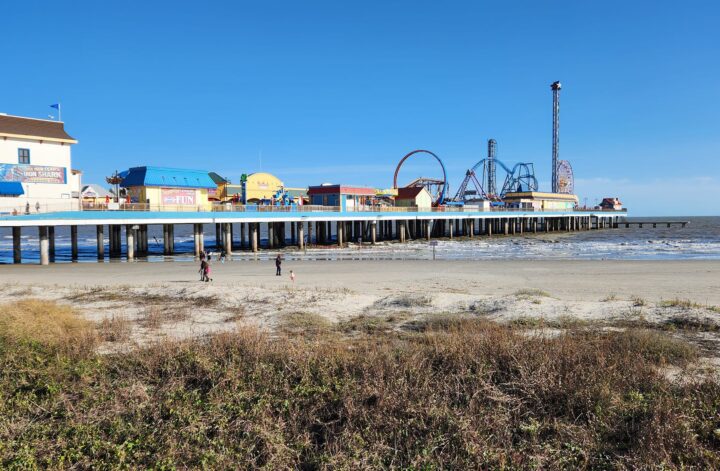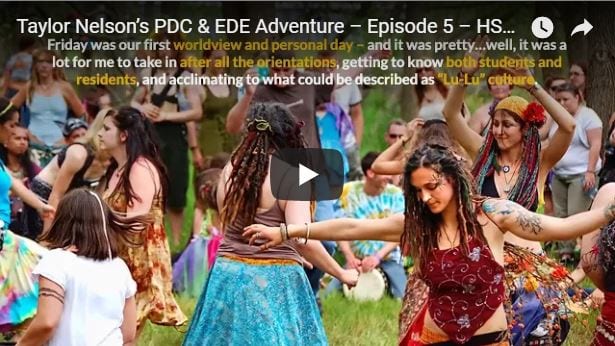Texas may be known for its size and swagger, but it’s also home to some of the most biodiverse ecosystems and innovative sustainability efforts in the country. From lush wetlands and desert canyons to green urban oases and regenerative farms, Texas offers an incredible array of ecotourism opportunities for travelers who want to experience nature while protecting it.
What Is Ecotourism, Exactly?
There are a few ways to look at it:
- Nature Tourism is all about immersing yourself in the beauty of the outdoors. This includes activities like birdwatching, hiking through state parks, kayaking in wetlands, and exploring botanical gardens. It’s a way to reconnect with the natural world and recharge, often while learning more about the flora, fauna, and ecosystems that surround us.
- Eco-Friendly Tourism emphasizes sustainability in how we travel—choosing green accommodations, minimizing waste, supporting local businesses, and reducing our carbon footprint. It’s about being intentional with our choices, from what we pack to where we eat and sleep.
- Eco-Tourism (capital E!) goes a step further. It actively contributes to environmental conservation, community empowerment, and cultural understanding. True ecotourism educates travelers while directly supporting the places they visit, whether through nature education centers, wildlife sanctuaries, or eco-volunteer projects.

Why Texas Is a Natural Fit for Ecotourism
With its incredible geographic diversity—wetlands in the east, mountains and deserts out west, beaches and barrier islands down south—Texas offers something for every type of nature lover. Its size means you can encounter drastically different environments just a few hours apart.
- Incredible Geographic Diversity
Texas spans more than 268,000 square miles and covers eleven distinct ecoregions, offering everything from East Texas piney woods and Gulf Coast marshes to central Hill Country springs and the desert-mountain landscapes of West Texas. This ecological range allows travelers to experience multiple environments—each with its own native plants, wildlife, and conservation stories—without ever leaving the state. - A Hotspot for Birders and Biodiversity
Texas ranks #1 in the U.S. for bird species diversity, with more than 640 species recorded. The Lower Rio Grande Valley is especially renowned for its rare migratory species like green jays, chachalacas, and painted buntings. Ecotourism in this region is a serious economic engine, generating over $300 million annually through birding festivals, guided tours, and nature center visits, according to Texas A&M research. - Urban Areas Embracing Green Infrastructure
Cities like Austin, Houston, and San Antonio are investing in green spaces, urban trails, native plant landscaping, and eco-conscious design. Parks like Houston’s Buffalo Bayou and Austin’s Barton Creek Greenbelt double as stormwater management systems and wildlife corridors. Public art, eco-events, and sustainable transport options all reflect how ecotourism can flourish even in dense metro areas. - Rich Cultural Heritage Tied to the Land
Texas’s environmental story isn’t just about wildlife—it’s about people. From Indigenous stewardship practices and Tejano ranching traditions to African-American farming legacies and German immigrant homesteads, Texas landscapes are deeply shaped by the communities that call them home. Ecotourism that centers cultural heritage—like visiting mission sites, historic trails, or regenerative farms—connects nature with history in meaningful ways. - Strong Statewide Conservation Efforts
The Texas Parks & Wildlife Department oversees a robust system of over 80 state parks, wildlife management areas, and natural areas. Many of these spaces prioritize habitat restoration, endangered species protection, and environmental education through interpretive programming. Nonprofits like the Texas Conservation Alliance and regional organizations like Hill Country Alliance amplify these efforts with community-based advocacy and education. - Rising Demand for Responsible Travel
With growing awareness around climate change, water use, and habitat loss, travelers are increasingly seeking sustainable destinations and experiences. Texas tourism boards and DMOs are responding by promoting eco-friendly lodging, low-impact activities, and carbon-conscious travel itineraries. This shift aligns with the larger movement toward regenerative tourism—travel that gives back to the places we explore.
Urban Eco Escapes
Nature isn’t just for the countryside. Texas cities are full of green spaces and sustainability-focused projects that make ecotourism accessible to everyone—even without leaving the city limits. Whether you’re into plants, parks, art, or architecture, there are countless ways to connect with the environment in urban Texas.
- Austin’s Eco Scene
Austin has long been at the forefront of urban sustainability. My eco-itinerary featured stops like the Lady Bird Johnson Wildflower Center, which champions native plant landscaping and water-wise gardening. Over at Zilker Botanical Garden, themed gardens like the butterfly trail and prehistoric garden offer both beauty and education. Community First! Village pushes the boundaries of urban ecotourism, demonstrating how eco-conscious design and social good can go hand in hand in a village setting built to serve formerly unhoused residents. - Green Design in Houston
Houston may be known for its sprawl, but it’s also home to innovative green design. Midtown Park boasts LEED certification, rainwater harvesting, native landscaping, and interactive public art. Nearby, the Houston Arboretum & Nature Center provides a peaceful escape into nature with over five miles of trails through forest, prairie, and wetland habitats—all just minutes from the Galleria and Uptown. It’s proof that ecotourism and ecological education can thrive in an urban setting. - Botanical Gardens as Living Classrooms
Texas’s botanical gardens aren’t just beautiful—they’re educational and rooted in conservation. At the Dallas Arboretum, you’ll find exhibits focused on sustainable gardening and native plantings. The Fort Worth Botanic Garden includes one of the oldest Japanese gardens in the U.S. and offers family-friendly conservation programming. The South Texas Botanical Gardens in Corpus Christi highlights the Gulf Coast’s unique flora and includes a butterfly house, wetland boardwalk, and apiary. Each garden brings sustainability to the forefront with engaging experiences for all ages. - Nature Centers in Every Major Metro
Nature centers offer immersive environmental education within city boundaries. In San Antonio, the Phil Hardberger Park Conservancy includes an urban wildlife crossing, green roofs, and eco-education programs. Dogwood Canyon Audubon Center near Dallas connects visitors with Blackland Prairie ecosystems through birding trails and conservation workshops. These centers often host volunteer opportunities, making them a great entry point for travelers who want to give back during their trips. - Aquariums and Zoos with a Conservation Focus
Institutions like the Dallas World Aquarium, Moody Gardens in Galveston, and the San Antonio Aquarium balance entertainment with environmental awareness. Many offer behind-the-scenes tours that highlight conservation programs, marine research, and wildlife rehabilitation. While places like SeaWorld spark debate, they’re increasingly incorporating conservation messaging and animal care education into their programming—something worth keeping an eye on for eco-conscious visitors. - Eco Architecture & Civic Spaces
Some of the most overlooked urban eco-escapes are right in the heart of city centers. Austin’s Central Library, a LEED Platinum-certified building, includes a rooftop butterfly garden, rainwater capture systems, and locally sourced materials. In Dallas, the Seaholm EcoDistrict integrates walkability, solar power, and smart water systems into a dynamic mixed-use neighborhood. Exploring these types of developments shows how cities can weave sustainability into the very fabric of their infrastructure.
Wild Texas Adventures
Outside the cities, you’ll find endless opportunities to dive into Texas’s natural landscapes in a way that supports conservation and fosters appreciation.
- Explore the State Parks & National Treasures
The Texas State Parks system features over 80 protected areas spanning deserts, pine forests, rivers, and coastline. Whether you’re hiking through the canyons of Palo Duro Canyon, kayaking in the wetlands of Caddo Lake, or camping under the stars at Davis Mountains, each park offers unique insights into the state’s ecological diversity. Many also host Dark Sky programs, guided nature walks, and Junior Ranger activities. - Coastal Conservation Experiences
The Texas Gulf Coast is a hotspot for marine ecotourism. At Padre Island National Seashore, you can witness the release of endangered Kemp’s ridley sea turtles—a once-in-a-lifetime experience that also supports recovery efforts. Dolphin and Turtle Watch Nature Tours in Port Isabel and South Padre emphasize wildlife safety and habitat preservation, while the South Texas Ecotourism Center connects visitors to regional trails, birding routes, and wetland restoration. - Underground and Aerial Adventures
For a geological deep dive, explore Inner Space Cavern or Natural Bridge Caverns to see Texas’s ancient underground world, filled with stalactites, fossils, and unique ecosystems. Above ground, bat watching at Congress Avenue Bridge is a must. Each summer evening, millions of Mexican free-tailed bats emerge in a dramatic cloud over Lady Bird Lake. - Wildlife Conservation Centers
Fossil Rim Wildlife Center in Glen Rose is a drive-through safari park focused on endangered species conservation—home to cheetahs, giraffes, and antelope. You can book guided tours or behind-the-scenes experiences. In the Hill Country, the Westcave Outdoor Discovery Center offers hikes through a stunning grotto and educational programming about habitat restoration and water stewardship. - Birding and Wetland Exploration
Located on the Central Flyway, Texas is a world-renowned birding destination. The Lower Rio Grande Valley hosts dozens of rare and tropical species. Wetland sites like the John Bunker Sands Wetland Center and Aransas National Wildlife Refuge offer trails, tours, and educational exhibits focused on migratory birds and ecosystem health. - Unique Eco-Experiences: From Bees to Bison
Looking for something off the beaten path? Apiary tours introduce visitors to sustainable beekeeping and pollinator education. Texas Safari Ranch offers intimate encounters with exotic and native species in Hill Country surroundings. You’ll also find eco-ranches and regenerative agriculture tours that dive into soil health, wildlife corridors, and sustainable land use across the state.
Celebrating Sustainability Through Food & Culture
Ecotourism isn’t just about landscapes—it’s also about how we live, eat, and engage with community values. Across Texas, food, festivals, and farms are redefining what it means to travel responsibly.
- Eco-Focused Events
Texas VegFest in Austin brings together food vendors, farmers, chefs, and activists to celebrate plant-based living and climate-conscious choices. At SXSW, Food Tank’s “All Things Food” series dives deep into regenerative agriculture, food equity, and the intersection of policy and sustainability—showing how food systems are part of the climate solution. - Sustainable Sipping at Vista Brewing
Located in Driftwood just outside Austin, Vista Brewing practices permaculture on its 21-acre property. This destination brewery sources ingredients from its own farm and nearby producers, uses composting and water conservation methods, and features eco-conscious architecture and landscaping. It’s a serene spot where good food and sustainability go hand-in-hand. - Pollinator Projects & Community Gardens
Local community gardens and apiary tours offer insight into small-scale sustainability. From Agua Dulce Farm in East Austin—an aquaponic and organic farm—to neighborhood gardens like those supported by the Sustainable Food Center, these initiatives build community, support biodiversity, and connect visitors with real solutions to urban food insecurity. - Farmers Markets and Locavore Dining
Farmers markets across the state—from the Texas Farmers’ Market at Mueller in Austin to Pearl Farmers Market in San Antonio—highlight Texas-grown produce, pasture-raised meats, and artisan products. Many local eateries, like Odd Duck and Café Momentum in Dallas, emphasize seasonal menus and ethical sourcing. - Agrotourism & Regenerative Ranches
In Central and West Texas, regenerative farms and ranches like Jester King Brewery and Roam Ranch offer workshops, tastings, and tours focused on soil health, carbon sequestration, and sustainable livestock practices. These immersive experiences show how agriculture can heal the land while feeding communities. - Cultural Festivals with a Green Mission
Events like EarthxExpo in Dallas bring together thousands for a weekend of climate talks, eco-films, green tech showcases, and music. Local culture is also celebrated with a sustainability twist at events like Wurstfest in New Braunfels and the Texas Book Festival in Austin, many of which now feature zero-waste initiatives, recycling education, and local food vendors.
Where to Go Next
Texas’s ecotourism map is constantly growing. These destinations offer unforgettable outdoor experiences while supporting conservation, education, and sustainability:
- South Texas Ecotourism Center
Located in Laguna Vista, this modern facility showcases the unique wildlife and native habitats of the Gulf Coast and Lower Rio Grande Valley. It serves as a launch point for birding, kayaking, and wildlife watching tours in one of the most biodiverse areas in the country. - Dallas World Aquarium & Moody Gardens
These immersive attractions combine conservation with education. The Dallas World Aquarium supports international species protection efforts, while Moody Gardens in Galveston features rainforest, aquarium, and discovery pyramids that spotlight sustainability and environmental science. - Urban Nature Centers & Zoos
Major cities across Texas boast engaging, eco-minded facilities. The San Antonio Zoo offers a conservation campus and habitat restoration programs. The Heard Natural Science Museum & Wildlife Sanctuary in McKinney includes trails, wetlands, and native wildlife exhibits. And the Dogwood Canyon Audubon Center in Cedar Hill gives visitors access to rare forest ecosystems just minutes from DFW. - Texas Safari Ranch
Near Clifton, this expansive wildlife sanctuary offers ethical drive-thru and guided safari experiences. Guests can encounter giraffes, zebras, and other exotic animals in large, naturalistic habitats while learning about global conservation and animal care practices. - John Bunker Sands Wetland Center
Just outside Dallas, this wetland center is a model for water reclamation, habitat preservation, and migratory bird research. Visitors can walk through elevated boardwalks, attend birding workshops, and learn about the vital role wetlands play in Texas’s water infrastructure. - Inner Space Cavern & Natural Bridge Caverns
These natural wonders allow guests to explore underground ecosystems formed over millions of years. Both offer educational tours that highlight geology, paleontology, and the importance of cave conservation.
Planning Your Texas Eco-Trip
Making sustainable travel choices helps keep these destinations thriving for future generations—while also deepening your connection with the places you visit:
- Stay Green
Choose accommodations that are LEED-certified, follow Green Globe standards, or practice eco-conscious operations like water conservation, renewable energy use, and zero-waste goals. Many eco-lodges, B&Bs, and even campgrounds across Texas now highlight their sustainability credentials online—don’t be afraid to ask questions when booking. - Eat Local & Seasonal
Support restaurants and cafes that partner with local farmers, offer plant-forward dishes, and minimize food waste. Farmers markets, such as those in Austin, Dallas, and San Antonio, are a great way to sample the region’s seasonal produce while connecting with the community. - Pack Light & Smart
Ditch the disposables. Travel with a reusable water bottle, bamboo utensils, cloth bags, and containers. For nature-based adventures, bring reef-safe sunscreen, biodegradable toiletries, and quick-dry clothing to reduce water and energy use during your stay. - Travel Consciously
Whenever possible, walk, bike, or use public transit—many Texas cities like Austin and Houston have expanded bike lanes and light rail options. For longer distances, consider carpooling with friends or renting hybrid or electric vehicles to reduce your carbon footprint. - Leave No Trace—And Take Only Photos
Whether you’re hiking, birding, or exploring a park, stick to marked trails, pack out all waste, and avoid disturbing wildlife. Use apps like iNaturalist to log and learn about species without removing them from their environment. - Support Local, Ethical Businesses
Choose tour guides, outfitters, and vendors that demonstrate sustainable practices and respect for local cultures and ecosystems. Bonus points if they’re locally owned, female- or minority-led, or involved in conservation work. - Offset Your Impact
Consider offsetting your travel emissions through verified programs like Cool Effect or CarbonFund.org. Many eco-travelers also donate to local conservation groups or volunteer during their trips to give back directly to the landscapes they enjoy.
Final Thoughts: A More Mindful Texas
Ecotourism in Texas isn’t just a weekend activity—it’s a mindset. Whether you’re getting your hands dirty in a community garden, marveling at cave formations, or quietly watching birds migrate across the sky, you’re participating in something bigger. You’re connecting with the land, supporting conservation, and celebrating the diverse beauty of the Lone Star State.
So, grab your hiking boots and a reusable tote—your next Texas eco-adventure awaits.
*Content was generated with AI based on my notes and direction, then edited and refined by me for accuracy.




